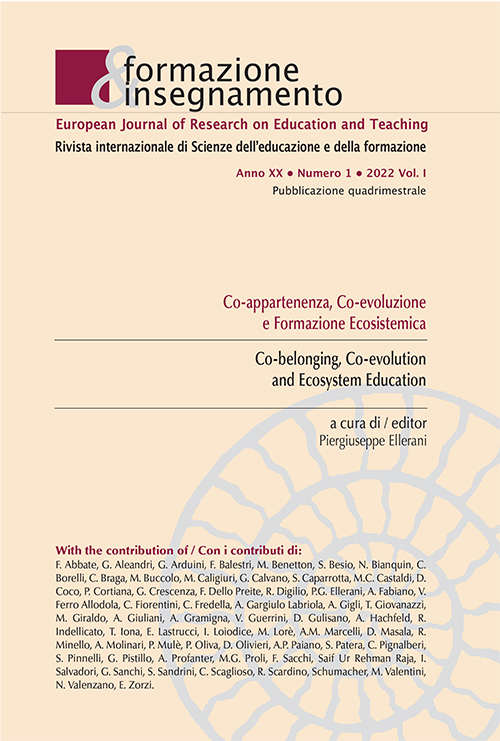I principi della permacultura come sistema di progettazione didattica
DOI:
https://doi.org/10.7346/-fei-XX-01-22_29Parole chiave:
Permaculture, Progettazione educativa, Ecologia, Etica, NaturaAbstract
Oggi viviamo un rinnovato interesse sulla salute ambientale e sui cambiamenti climatici come questioni di giustizia sociale. La permacultura può essere considerata un approccio sistemico alla risoluzione dei problemi basato su cicli, processi e principi osservati in natura. Secondo i principi della permacultura in un giardino o paesaggio, piantare, seminare, coltivare e progettare il paesaggio sono praticati in modo da imitare i processi della natura e riflettono una comprensione del flusso d’acqua, dei modelli del vento, della composizione della terra e del suolo, piante e i benefici degli insetti, zone di crescita e molti altri elementi. Negli ultimi anni, i principi della permacultura sono si stanno estendendo dai giardini e dai paesaggi all’ambito della «permacultura sociale». I giardini didattici fungono da ricchi siti di apprendimento della sostenibilità grazie ai loro vantaggi ecologici e socioculturali e forniscono agli studenti un modo pratico per impegnarsi in questioni interconnesse e iniziare a partecipare alla risoluzione di problemi complessi. L’approccio alla progettazione riferita alla permacultura può essere, dunque, un modo per ricreare i principi della natura nelle nostre vite, nelle interazioni nei contesti educativi e sociali. Nel presente lavoro si intende delineare il possibile contributo che la permacultura può fornire nella definizione di una nuova dimensione della progettazione didattica ed educativa in grado di accogliere in modo più efficace le istanze sempre più emergenti dettate dalla sostenibilità.
##submission.downloads##
Pubblicato
Come citare
Fascicolo
Sezione
Licenza
Copyright (c) 2022 Giovanni Arduini

TQuesto lavoro è fornito con la licenza Creative Commons Attribuzione 4.0 Internazionale.
Formazione & insegnamento è distribuita con la seguente licenza: Attribution 4.0 International (CC BY 4.0).
Per ulteriori dettagli, si rimanda alle Politiche di archiviazione e ai Termini di Copyright e Licenza.





